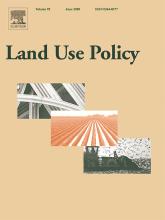Resource information
We assess the production impacts of a 100% conversion to organic agriculture in England and Wales using a large-scale linear programming model. The model includes a range of typical farm structures, scaled up across the available land area, with the objective of maximising food production. The effects of soil and rainfall, nitrogen (N) supply/offtake and livestock feed demand are accounted for. Results reveal major reductions in wheat and barley production, whilst the production of minor cereals such as oats and rye increase. Monogastric livestock and milk production also decreased considerably, whilst beef and sheep numbers increased. Vegetable production was generally comparable to that under conventional farming. Minimising the area of fertility building leys and/or improving rates of N fixation increased the food supply from organic agriculture at the national level. The total food output, in terms of metabolisable energy, was 64% of that under conventional farming. This would necessitate substantial increases in food imports, with corresponding expansion of cultivated agricultural land overseas. Significant changes in diet and reductions in food waste would be required to offset the production impacts of a 100% conversion to organic farming.


